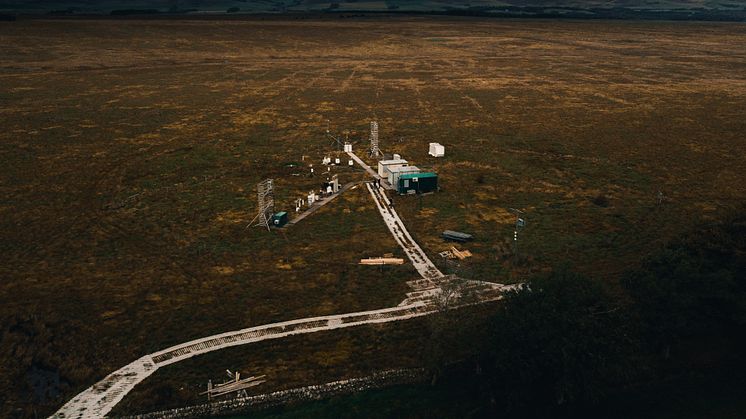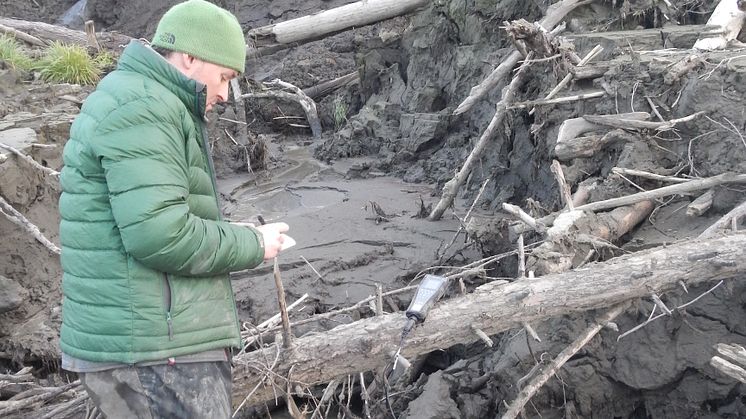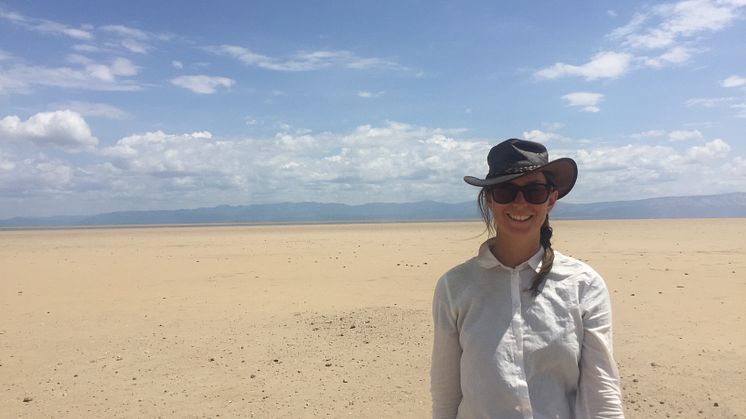
Press release -
Cutting-edge technology will boost real-time monitoring of remote peatlands
Researchers will develop new ways to monitor carbon emissions from vast swathes of peatland after winning almost half a million pounds to develop new sensors that can be used in remote areas.
Peatlands store around one-third of the world’s soil carbon, playing a vital role in reducing carbon emissions and combatting climate change. They also provide a unique habitat for rare species and help to minimise flood risks, but when they are cultivated or drained they dry out, releasing their stores of carbon dioxide and other greenhouse gases.
With more than one-tenth of land area in the UK being covered by peatland – in areas such as the Peak District, the North York Moors National Park and Dartmoor – the government is keen to support projects, such as rewetting, to manage and restore them to help the UK achieve net zero by 2050 and tackle climate change.
However, it is extremely challenging to measure the effectiveness of efforts to recover peatland. Capturing readings on an hourly or daily basis requires sophisticated and expensive infrastructure which limits the size of the area that can be monitored.
That is now set to change after Dr Paul Mann alongside colleagues from the Geography and Environmental Sciences and Computer and Information Sciences departments at Northumbria University, and the UK Centre for Ecology & Hydrology, were awarded almost £490,000 funding from the Natural Environment Research Council, Defra and Innovate UK’s Innovation in Environmental Monitoring programme.
Dr Mann and his team will work across the UK to develop low-cost sensor systems that can monitor carbon dioxide and methane emissions from peatlands. A key test site will be the ICOS Auchencorth Moss station near Edinburgh, where they will be able to measure greenhouse gas exchange between air and peatland and compare their results with high-precision ICOS data time series from the same site.

Their work will lead to improvements in carbon release estimates in the UK and support the transition to net zero. The team will also test if these solutions are capable of monitoring greenhouse gas changes occurring in extreme locations such as Arctic Canada and Finland.
Sensors will be developed with the ability to work remotely on low power meaning they can be left unsupervised for months, regularly sending back readings to a shared hub. This will allow networks of monitors to be deployed across much larger areas of the UK.
The study – known as GEMINI – is one of 13 to have received a share of £12 million funding to harness the potential of new sensing and monitoring technologies.
The funding represents an important step forward in efforts to protect the environment, as trusted monitoring data is crucial in assessing the effectiveness of interventions and informing decisions about where resources should be best targeted.
Dr Mann, an Associate Professor in Environmental Sciences who specialises in carbon cycling, said: “As the UK strives to achieve net zero emission targets, the demand for accurate and widespread measurements of greenhouse gases is increasing.
“The GEMINI project aims to develop low-cost, and easy-to-use instruments to measure how our landscapes breathe and trap these gases, helping us capture carbon here in the UK and in rapidly changing places like the Arctic.”
He added: “Effective, high-quality monitoring is essential to meeting global environmental goals. It enables us to track the status of our natural environment, measure the success of interventions that tackle climate change, and support UK decision-making.”
It is hoped that the new services, systems and technologies developed thanks to this funding will be made more widely available for research, government and business use, helping to drive growth and commercial opportunity in the UK.
Environment Minister Rebecca Pow said: “This funding will support our world-leading scientists develop new capabilities for understanding and monitoring the natural environment and allow us to develop better quality evidence faster and more efficiently - in turn helping us create a cleaner and greener environment.
“There is also terrific potential for any successful environmental monitoring products and services to be exported internationally, supporting nature recovery globally and boosting the reputation of the UK scientific community.”
Dr Iain Williams, Director of Strategic Partnerships for NERC, added: “This investment by NERC and Defra will help to deliver a step-change in environmental monitoring, modelling and decision-making.
“It supports UKRI’s ambition to help businesses to grow through the development and commercialisation of new products, processes, and services, supported by an outstanding research and innovation ecosystem.”
Northumbria University’s Department of Geography and Environmental Sciences is renowned for carrying out world-leading research into the increasingly urgent issues affecting society and the environment, such as the climate crisis, global sustainable development, cold climates and solar-terrestrial science.
Topics
Categories
UNIVERSITY OF THE YEAR 2022 (Times Higher Education Awards)
Northumbria is a research-intensive university that unlocks potential for all, changing lives regionally, nationally and internationally.
Two thirds of Northumbria's undergraduate students come from the North East region and go into employment in the region when they graduate, demonstrating Northumbria's significant contribution to social mobility and levelling up in the North East of England.
Find out more about us at www.northumbria.ac.uk
--- Please contact media.communications@northumbria.ac.uk with any media enquiries or interview requests ---













